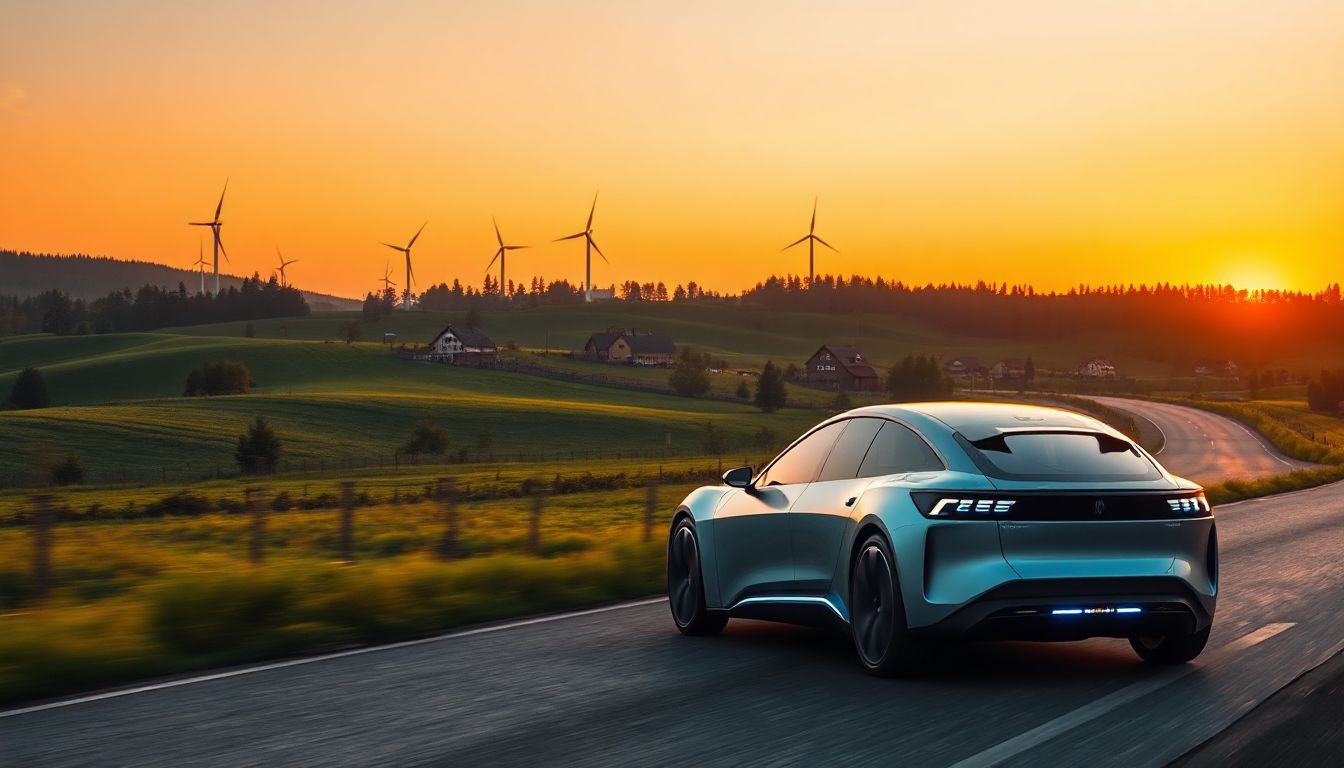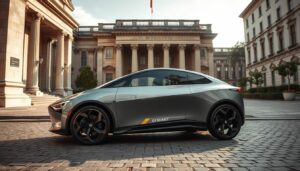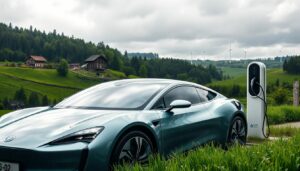Introduction
Germany has long been a major player in the auto world. Now, it’s leading the charge in electric vehicles. Their focus on EVs isn’t just about new cars—it’s a step toward cleaner air, less dependence on fossil fuels, and a stronger economy. Germany’s goals are big: they want millions of EVs on the roads and a complete shift to electric by 2030. With strong policies, major brands, and tech innovations, Germany is shaping the future of electric mobility across Europe.
The Rise of Electric Vehicles in Germany
Current Market Landscape and Growth Trends
Electric car sales in Germany are climbing fast. Last few years saw a boom, with EVs making up a larger piece of the puzzle each quarter. Why? Consumers want eco-friendly options, and regulations push for cleaner transport. Big car brands are stepping up as well. Volkswagen, BMW, and Mercedes-Benz are leading the way. They’ve launched many new EV models to meet rising demand. The German market is now one of the biggest for EVs in Europe, with yearly growth rates hitting double digits.
Government Policies and Incentives
Germany has rolled out many programs to make EVs more appealing. There are subsidies, tax breaks, and rebates for people who buy electric cars. The government wants as many EVs as possible on the roads by 2030. They have clear targets: over 7 million EVs by then. EU rules help too, pushing Germany to tighten emissions standards and support cleaner tech. All these policies show how serious Germany is about becoming a front-runner in electric mobility.
Infrastructure Development and Charging Networks
Building a strong charging network is key. Germany is rapidly expanding public stations in cities and along highways. Fast chargers are becoming common, helping drivers recharge quickly. Still, challenges remain—such as uneven charger distribution in rural areas. To fix this, companies and authorities are working together to improve network coverage with smarter sites and better tech. More charging options mean fewer worries for EV drivers.
Key Players and Innovations in the German EV Industry
Leading Automotive Manufacturers
German car companies are on a mission. Volkswagen has released the ID series—its main EV lineup—and plans to launch many more. It aims to be the top EV seller in Europe. BMW focuses on luxury EVs with models like i3 and i8. Mercedes-Benz pushes premium electric rides with its EQ series, trying to attract high-end customers. These brands are investing billions to craft better batteries, longer-range cars, and smarter features.
Emerging Startups and Tech Companies
Not all success comes from big brands. Startups like Sono Motors are introducing innovative ideas like solar-powered EVs. Many tech firms are partnering with carmakers to bring new features—like better autonomous driving software or smarter charging systems. These collaborations push the industry further and faster.
Cutting-Edge Technologies
Battery tech keeps getting better. German firms are working on batteries that last longer, charge faster, and cost less to produce. Some are exploring solid-state batteries, which could revolutionize EV range and safety. Energy-efficient motors, smart charging, and vehicle-to-grid (V2G) systems are also gaining ground. These tech advances make EVs more practical and eco-friendly.
Environmental and Economic Impact of EV Adoption in Germany
Contribution to Climate Goals
Germany aims to cut emissions drastically. Switching to EVs helps reduce carbon dioxide from cars, a major pollution source. The country’s targets align with the European Green Deal, which seeks cleaner air and less climate change. Electric cars play a big role in meeting these ambitious goals.
Economic Benefits and Job Creation
The shift to EVs opens new doors for business. From manufacturing batteries to building charging stations, many jobs are created. Germany is already exporting EV technology worldwide, boosting its economy. As the industry grows, so do the opportunities for engineers, tech workers, and factory workers.
Challenges and Barriers
Even with progress, setbacks exist. Raw materials like lithium and cobalt are hard to source, often coming from distant countries. Market hesitation and consumer concerns about range, price, or charging time still exist. Policy and regulation need to keep pace to remove these hurdles and support widespread EV adoption.
Future Outlook and Strategic Initiatives
Germany’s 2030 EV Targets and Policies
Germany plans to have over 10 million EVs on the roads by 2030. To reach this, they are planning new incentives and policies. They aim to phase out combustion engines entirely in the coming years. That means tougher emission standards and more support for EV buyers.
Technological Innovations on the Horizon
Expect to see breakthroughs like solid-state batteries hitting the market soon. These tech upgrades could double the range and cut charging times roughly in half. Also, renewable energy integration into charging stations is growing. This makes EV charging even greener. Plus, smarter cars with better connectivity will make driving safer and easier.
Global Positioning and Competitive Advantages
Germany’s automotive industry is well-positioned to stay ahead. They’re forming international partnerships and entering markets beyond Europe. Their focus on quality, innovation, and sustainability enhances their global reputation. This keeps Germany at the forefront of eco-friendly car production and export.
Conclusion
Germany stands at the forefront of electric vehicle innovation. With strong policies, innovative brands, and expanding technology, they’re shaping a cleaner, smarter future. The country’s focus on growth, sustainability, and technology makes it a key leader in Europe’s EV market. The message is clear—if you care about the environment and smart mobility, Germany’s electric revolution is something worth watching. Embrace EVs and support their efforts for a greener tomorrow.




